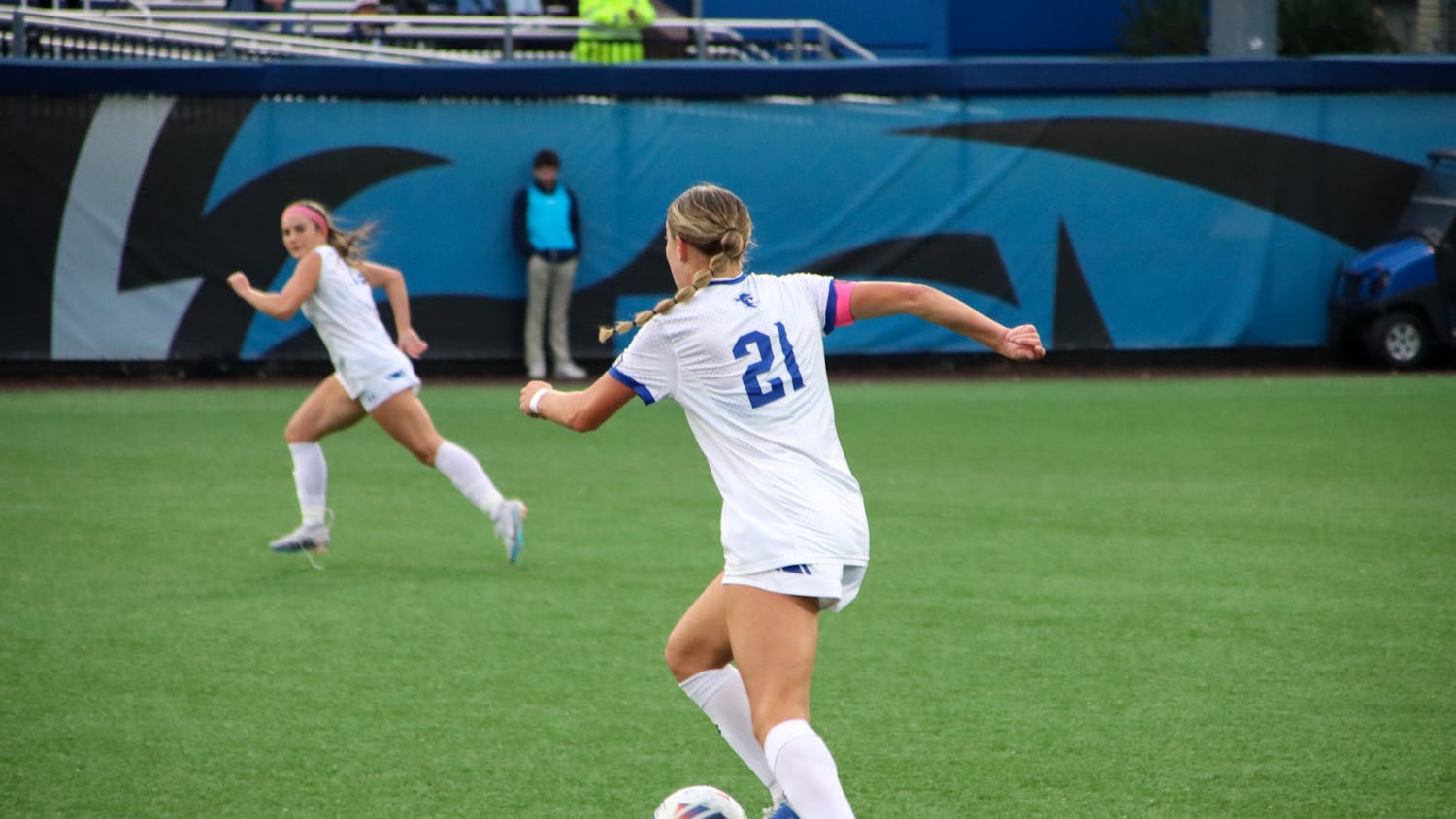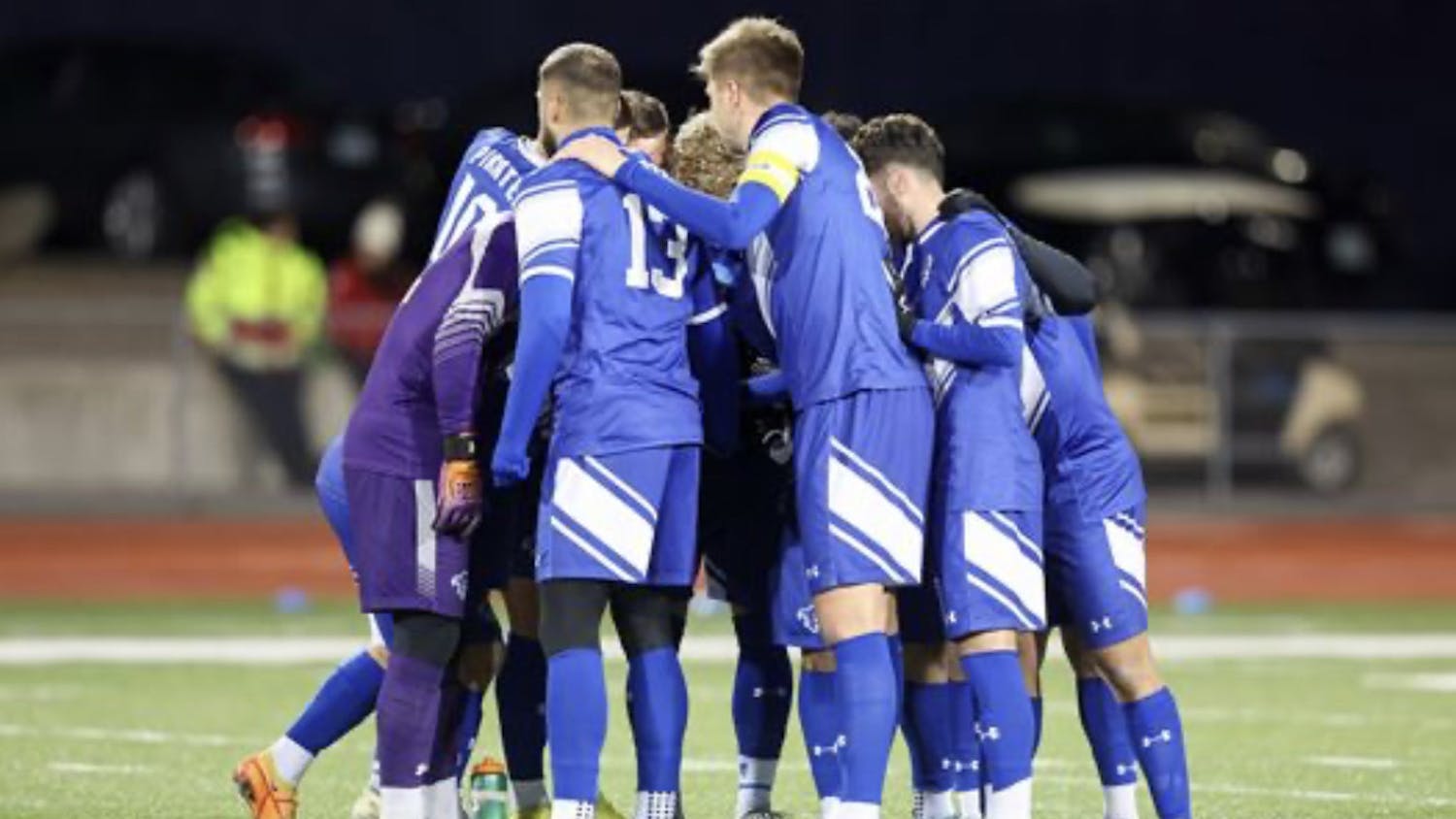In March 2016, a handful of notable members of the women’s national team filed a complaint against United States Soccer protesting the pay disparity between the men’s and women’s national teams.
Despite the different pay structures organized by the players association of each team and each collective bargaining agreement, the discrepancy was evident in a number of financial notes and statistics.
[caption id="attachment_18764" align="aligncenter" width="620"] Carli Lloyd is one of the USWNT players who protested the pay gap. Photo via mlssoccer.com.[/caption]
After more than a year of conflict, U.S. Soccer and the U.S. Women’s National Team Players Association signed their collective bargaining agreement on April 5, according to the official U.S. Soccer website.
The agreement addressed some of the major qualms of the women’s national team, however, it failed to equate the women’s pay to that of the men’s.
Equal pay with the men’s team was the staple of the complaint made by Carli Lloyd, Hope Solo and three other USWNT players.
Some of the positive changes from the new five-year collective bargaining agreement include better match bonuses for the women’s team and a much-improved base salary, which could elevate their earned income to a range between $200,000 and $300,000 within a single year, according to The New York Times.
Additionally, one of the largest controversies addressed was the difference in lifestyle and travel per diems that existed between the separate teams.
There was no actual backing to this difference, which gave the men’s teams an additional $12.50 over the women’s $50 per day for domestic events, and an extra $15 per day over the women’s $60 for international events.
With this remedied, things are finally taking a turn in the right direction, yet the agreement fell short of the women’s ultimate goal of equal compensation.
Many would argue that compensation should be based on revenue generating, and in that case, the women would have the advantage after their successful World Cup run.
According to The Times, the 2015 women’s team exceeded expected game revenue by more than $16 million and netted a profit of $6.6 million, more than three times the men’s profit of less than $2 million.
In 2017, expectations for revenue still favor the women, who are predicted to bring in more than $5 million in profit compared to the $1 million loss the men are supposed to incur.
Beyond profit, a closer inspection of the workload between the teams show that the men have played almost 75 percent of the games that the women have played between 2012 and 2016.
Only one of the five years did the men play more games than the women, and despite taking on a larger slate of games, the women’s team played significantly better by winning 88 of its 110 games. The men on the other hand have been victorious in just 44 of their 76 contests.
Despite their clear dominance in team success and ability to generate profit, the USWNT players that spoke out are not asking to be compensated more than the men, but simply to be compensated equally.
U.S. Soccer financial reports revealed that since 2008, the top five highest paid men’s and women’s players made between $1,401,485 and $1,145,629, a minor difference when looking deeper into the rosters.
The 25th highest paid male player made $580,522 in that span, while the respective player on the women’s team made $341,721. At the 50th highest paid player spot, the respective women’s team player made slightly more than a 10th of what their male counterpart made.
The noble aspect of their stance is that these top tier players are fighting for more than just their own benefit, but to support their undercompensated teammates and the future generations of U.S. women’s soccer.
Kyle Kasharian is a business major from Green, N.J. He can be reached at kyle.kasharian@student.shu.edu or on Twitter @ItsKyleKash.
Carli Lloyd is one of the USWNT players who protested the pay gap. Photo via mlssoccer.com.[/caption]
After more than a year of conflict, U.S. Soccer and the U.S. Women’s National Team Players Association signed their collective bargaining agreement on April 5, according to the official U.S. Soccer website.
The agreement addressed some of the major qualms of the women’s national team, however, it failed to equate the women’s pay to that of the men’s.
Equal pay with the men’s team was the staple of the complaint made by Carli Lloyd, Hope Solo and three other USWNT players.
Some of the positive changes from the new five-year collective bargaining agreement include better match bonuses for the women’s team and a much-improved base salary, which could elevate their earned income to a range between $200,000 and $300,000 within a single year, according to The New York Times.
Additionally, one of the largest controversies addressed was the difference in lifestyle and travel per diems that existed between the separate teams.
There was no actual backing to this difference, which gave the men’s teams an additional $12.50 over the women’s $50 per day for domestic events, and an extra $15 per day over the women’s $60 for international events.
With this remedied, things are finally taking a turn in the right direction, yet the agreement fell short of the women’s ultimate goal of equal compensation.
Many would argue that compensation should be based on revenue generating, and in that case, the women would have the advantage after their successful World Cup run.
According to The Times, the 2015 women’s team exceeded expected game revenue by more than $16 million and netted a profit of $6.6 million, more than three times the men’s profit of less than $2 million.
In 2017, expectations for revenue still favor the women, who are predicted to bring in more than $5 million in profit compared to the $1 million loss the men are supposed to incur.
Beyond profit, a closer inspection of the workload between the teams show that the men have played almost 75 percent of the games that the women have played between 2012 and 2016.
Only one of the five years did the men play more games than the women, and despite taking on a larger slate of games, the women’s team played significantly better by winning 88 of its 110 games. The men on the other hand have been victorious in just 44 of their 76 contests.
Despite their clear dominance in team success and ability to generate profit, the USWNT players that spoke out are not asking to be compensated more than the men, but simply to be compensated equally.
U.S. Soccer financial reports revealed that since 2008, the top five highest paid men’s and women’s players made between $1,401,485 and $1,145,629, a minor difference when looking deeper into the rosters.
The 25th highest paid male player made $580,522 in that span, while the respective player on the women’s team made $341,721. At the 50th highest paid player spot, the respective women’s team player made slightly more than a 10th of what their male counterpart made.
The noble aspect of their stance is that these top tier players are fighting for more than just their own benefit, but to support their undercompensated teammates and the future generations of U.S. women’s soccer.
Kyle Kasharian is a business major from Green, N.J. He can be reached at kyle.kasharian@student.shu.edu or on Twitter @ItsKyleKash.





